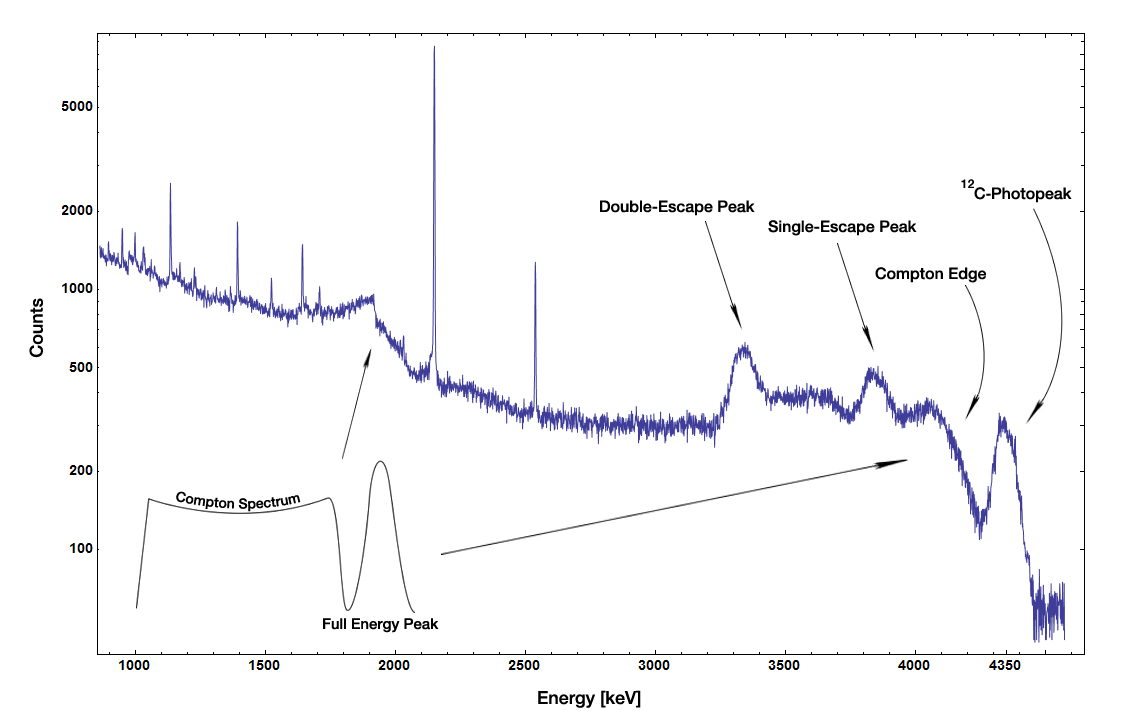Compton edge on:
[Wikipedia]
[Google]
[Amazon]
In
 In a
In a
spectrophotometry
Spectrophotometry is a branch of electromagnetic spectroscopy concerned with the quantitative measurement of the reflection or transmission properties of a material as a function of wavelength. Spectrophotometry uses photometers, known as sp ...
, the Compton edge is a feature of the spectrograph that results from the Compton scattering
Compton scattering, discovered by Arthur Holly Compton, is the scattering of a high frequency photon after an interaction with a charged particle, usually an electron. If it results in a decrease in energy (increase in wavelength) of the photon ...
in the scintillator or detector
A sensor is a device that produces an output signal for the purpose of sensing a physical phenomenon.
In the broadest definition, a sensor is a device, module, machine, or subsystem that detects events or changes in its environment and sends ...
. When a gamma-ray
A gamma ray, also known as gamma radiation (symbol γ or \gamma), is a penetrating form of electromagnetic radiation arising from the radioactive decay of atomic nuclei. It consists of the shortest wavelength electromagnetic waves, typically sh ...
scatters off the scintillator but escapes, only some fraction of its energy is registered by the detector. The amount of energy deposited in the detector depends on the scattering angle of the photon, leading to a spectrum of energies each corresponding to a different scattering angle. The highest energy that can be deposited, corresponding to full back-scatter, is called the Compton edge.
Background
 In a
In a Compton scattering
Compton scattering, discovered by Arthur Holly Compton, is the scattering of a high frequency photon after an interaction with a charged particle, usually an electron. If it results in a decrease in energy (increase in wavelength) of the photon ...
process, an incident photon collides with an electron in a material. The amount of energy exchanged varies with angle, and is given by the formula:
:
or
: Knoll, Glenn F. ''Radiation Detection and Measurement'' 2000. John Wiley & Sons, Inc.
* ''E'' is the energy of the incident photon.
* ''E' '' is the energy of the outgoing photon, which escapes the material.
* is the mass of the electron.
* ''c'' is the speed of light.
* is the angle of deflection for the photon.
The amount of energy transferred to the material varies with the angle of deflection. As approaches zero, none of the energy is transferred. The maximum amount of energy is transferred when approaches 180 degrees.
:
:
It is impossible for the photon to transfer any more energy via this process, hence there is a sharp cutoff at this energy giving rise to the name ''Compton edge''.
The region between zero energy transfer and the Compton edge is known as the ''Compton continuum''.
References
See also
*Gamma spectroscopy
Gamma-ray spectroscopy is the quantitative study of the energy spectra of gamma-ray sources, such as in the nuclear industry, geochemical investigation, and astrophysics.
Most radioactive sources produce gamma rays, which are of various energi ...
* Compton suppression
{{DEFAULTSORT:Compton Edge
Spectroscopy